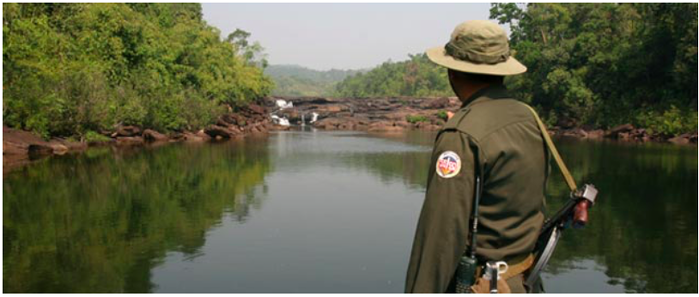Core Environment Program and Biodiversity Conservation Corridors Initiative in the Greater Mekong Subregion, Phase 2 (TA - 3rd Supplementary)
Details
|
Project |
44323-012 |
|
Related Projects |
Search |
|
Type |
TA |
|
Sector |
Agriculture, Natural Resources and Rural Development |
|
Country |
Regional |
|
Start |
2014 |
|
End |
2020 |
|
Status |
Closed |
|
Last Edited |
05 Jul 2021 |
Funding
US$('000) 917
Confinancing Source: Global Environment Facility (US$ 458,715.00); GEF-Special Climate Change Fund (US$ 458,716.00)
Project Description
The TA will promote sound environmental management and climate resilient interventions within the context of the GMS ECP. It will aim to reconcile development objectives in the GMS economic corridors with conservation and sustainable use of ecosystem services in priority transboundary landscapes and associated biodiversity corridors. The TA will accomplish this by integrating sound environmental management, biodiversity conservation and climate resilience measures in the GMS Economic Cooperation Program (ECP). Specifically, it will support the application of environmental management, planning and monitoring approaches and tools to aid investment decision making; support climate resilience through adaptation planning and low carbon and energy efficient investment strategies; support sustainable financing for conservation; and capacity development to ensure uptake of these measure by appropriate stakeholders including government, civil society and community groups.
Progress
(as of March 2021)
Project closed
News and Multimedia

A poverty-free ecologically rich Greater Mekong Subregion. Thatâs the vision of the Core Environment Program (CEP) â a platform for multi-country and multi-sector engagement on key environmental issues.
Source: http://www.gms-eoc.org

Cambodia is the subregion's smallest country, situated between Thailand to the west, Lao PDR to the north, and Viet Nam to the east. Much of its land area of 181,040 km2 is taken up by a shallow basin, centered on Tonle Sap Lake, and surrounded by the Cardamom and other mountains in the southwest.
Source: http://www.gms-eoc.org

Situated to the east of Yunnan, Guangxi is the only other province in PR China that shares borders with other GMS countries. Like Yunnan Province, it has strong linkages with the GMS in areas including resources, culture, trade, transport and tourism.
Source: http://www.gms-eoc.org

Yunnan Province, south of the Yun Mountains, in the extreme southwest of PRC, is home to an exceptionally rich biological diversity within its land area of 396,790 km.2 It is the eighth largest province of the country, bordered to the south and west by Lao PDR, Myanmar, and Viet Nam.
Source: http://www.gms-eoc.org

The only landlocked country in Southeast Asia, Lao PDR shares borders with PR China to the north, Viet Nam to the east, Cambodia to the south, Thailand to the west, and Myanmar to the northwest.
Source: http://www.gms-eoc.org

Myanmar forms a bridge between the peoples and cultures of South and Southeast Asia. The largest country in the subregion, it borders India and Bangladesh to the northwest, PR China to the northeast, Lao PDR to the east, and Thailand to the southeast.
Source: http://www.gms-eoc.org

Thailand lies at the heart of the Southeast Asian mainland, bordered by Myanmar to the west, Lao PDR and Cambodia to the east, and peninsular Malaysia to the south. Nearly 80% of its 67 million people live in rural areas.
Source: http://www.gms-eoc.org

Viet Nam lies along the western shore of the South China Sea and is bordered by PR China to the north, Lao PDR to the west, and Cambodia to the southwest. There is a dense network of rivers and waterways in the Red River in the north and the Mekong River in the south.
Source: http://www.gms-eoc.org
- Rare Plant and Animal Species Find Sanctuary in PRC's Tropical Rainforest. https://www.adb.org/news/videos/rare-plant-and-animal-species-find-sanctuary-prcs-tropical-rainforest








